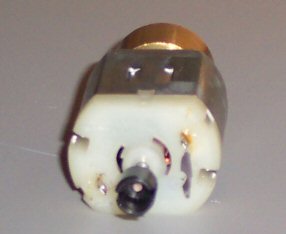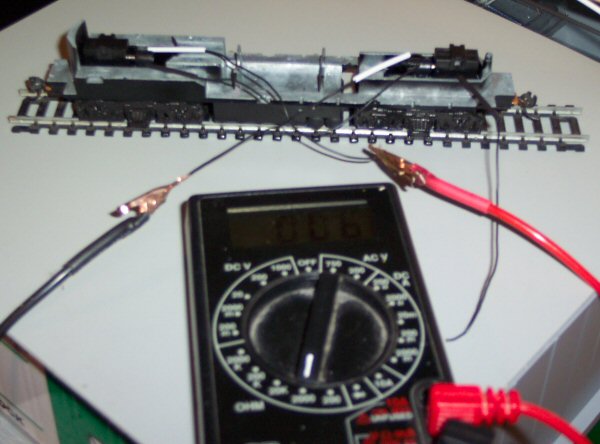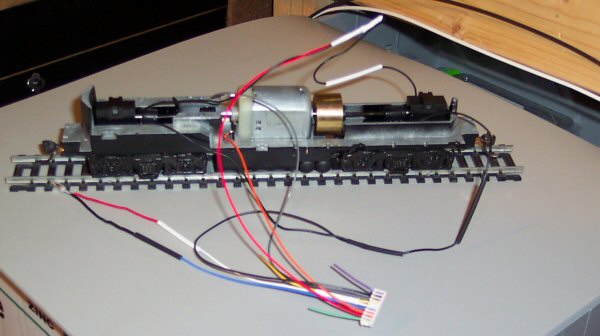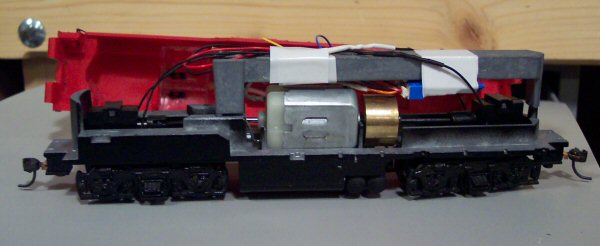Puckdropper's Place Railroad2008-02-18 18:28:14
Walthers GP9 Wheel Cleaning
Yesterday, I picked up a Walthers GP9M locomotive in the Wisconsin Central scheme. When I placed it on the layout and turned on the power, nothing happened. So, I gave it a gentle nudge to make sure it wasn't on a section of dirty track. Still nothing.Immediately I suspected dirty wheels, and took a look at them. They were black, like someone had tried to use a "darkening" solution on the wheels.
So, in order to get this locomotive to run, I was going to have to clean the wheels. First, I connected a 9V battery to the motor terminals to get the wheels to turn. Then, I used a paper towel with cleaning solution to remove the topmost layer of gunk. That helped a little bit, the locomotive would at least move a little.
Next, I tried a dremel tool with polishing bit. Using the white buffing compound, I cleaned more of the gunk off the wheels. After 30 seconds or so, I had to stop and clean off the polishing bit. This usually works for the heavier cases of crud and dirt, and it did work here, but not good enough. The locomotive would move back and forth at high speeds, with the headlight flickering the whole time.
Finally, I switched to the steel wire wheel attachment on the dremel. This removed the rest of the gunk, and got in to the most important places on the wheel: Near the flange. A model railroad wheel tends to pick up power from around the center of the wheel tread in to the flange, and that's the point where it needs to clean most. The wire wheel successfully cleaned off the rest of the gunk, and restored a shining appearance to the wheel treads. When I tested it on the layout this time, the locomotive would crawl at low speeds like the one I installed a decoder in.
I hope the steel wheel did not remove any electroplated protective covering on the wheels. If it did, there may be issues in the future with dirty wheels.
Update: I've found a better way to clean the wheels than using a metal wheel. It's the Dremel 423E cloth polishing wheel.












